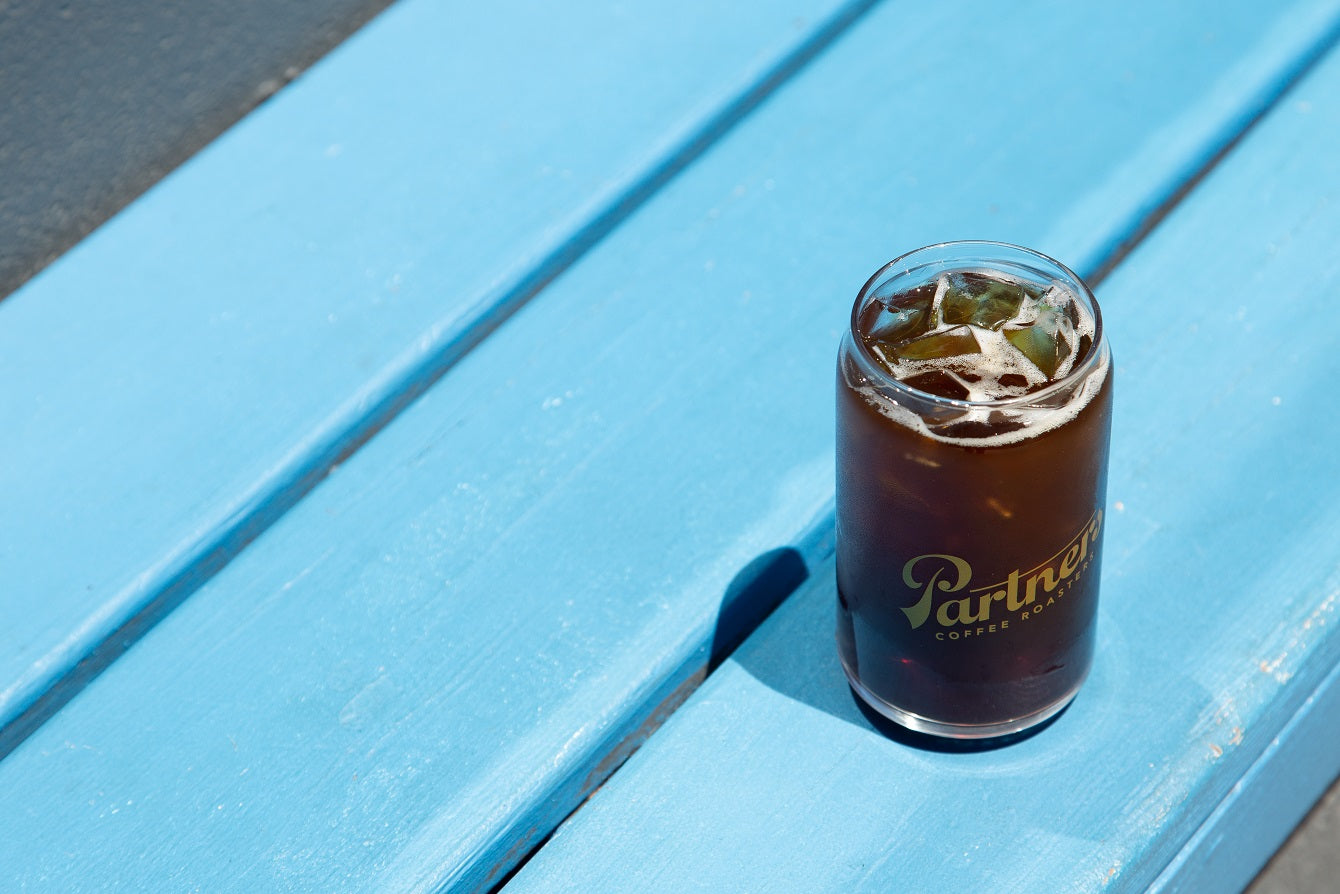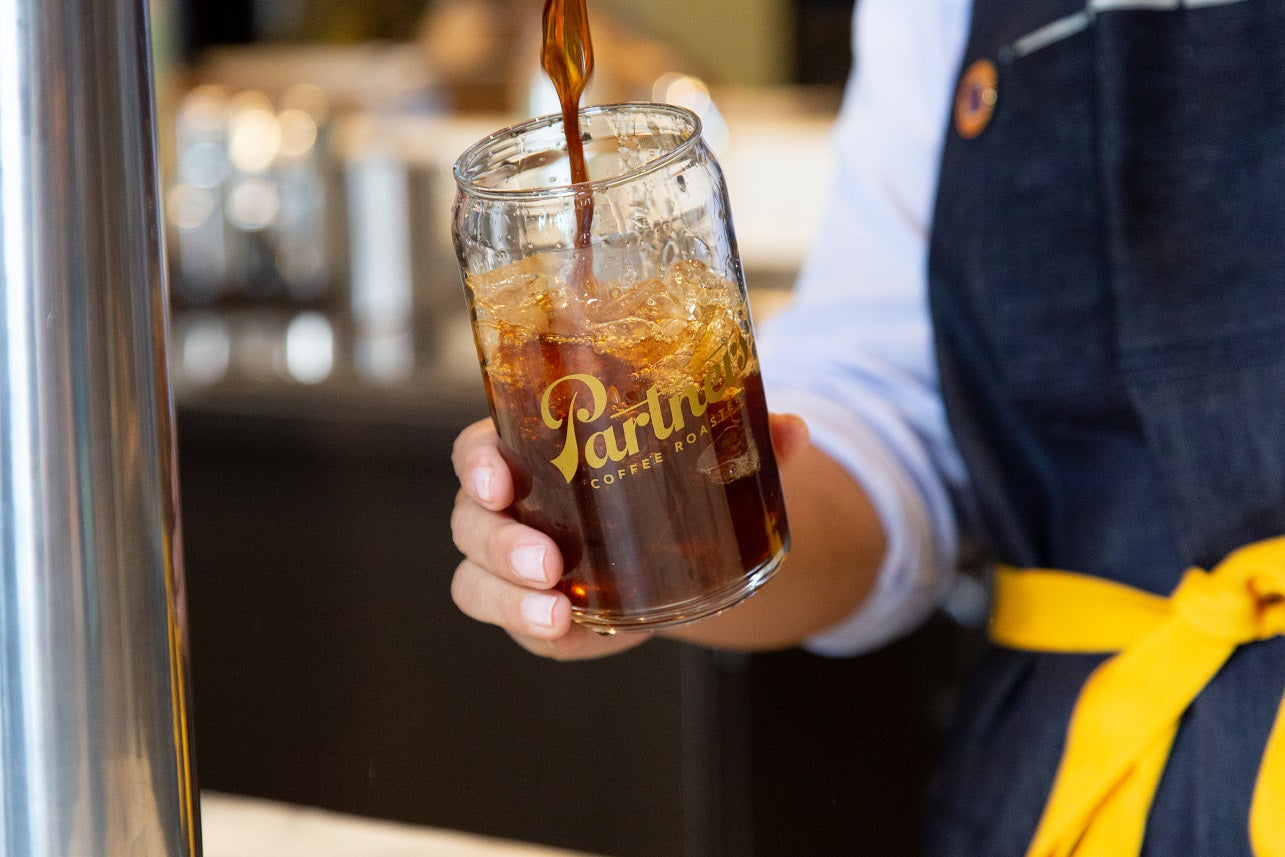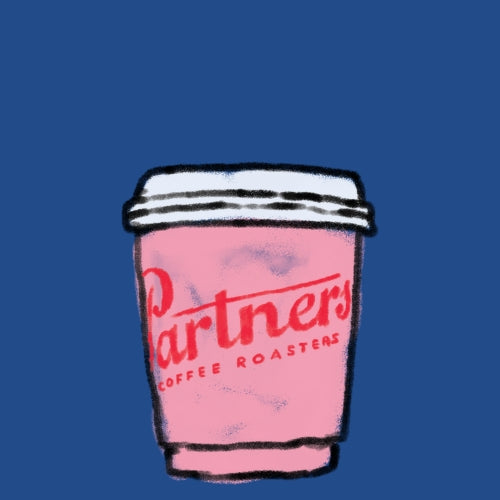In the world of cold coffee there are three different ways of brewing and they will get you different results, which are cold brewing, flash brewing and hot brewing coffee with the intent to cool down. When describing the differences between these methods it comes down to the recipe used and the flavor you can achieve.
First, let’s begin with defining each brew method used for making cold coffee. Cold brew is made by using coarsely ground coffee in room temperature water and letting it steep for 12-24 hours. Flash brewing is when you pour hot water over a bed of coffee which is then instantly diluted and cooled with ice located in a vessel below. The last one is hot brewing coffee and then placing in a fridge or freezer to cool down over a period of time. Typically, hot brewing coffee and refrigerating after is not highly recommended due to the oxidation process that happens which will highlight more acidity and bitterness in the overall brew.
The number one thing that comes up when getting ready to brew any type of coffee is water. Water makes up the majority of brewed cup of coffee ranging between 98-99% water, in which you ideally want water to be filtered. The temperature of water you brew coffee at is an important aspect of how you extract coffee. Coffee is comprised of three main flavor compounds; acids, sugars and bitters. These compounds will dissolve at different rates based on the temperature of the water used. When hot brewing coffee the best temperature to brew with is between 195-205 degrees fahrenheit which will extract at the optimum rate. However when it comes to cold brew you are using cool water for brewing which is part of the reason why this takes a longer period of time. By using cooler water this also is why cold brew is known the lack acidity which does not break down particular compounds at the same rate as brewing with hot water.
The coffee to water ratio, which is the recipe used, will also vary depending on the type of cold coffee brewing. With cold brew this usually ranges at 1 part coffee to 10-12 parts water which will result in a concentrate which can later be diluted with either water or even milk for more creaminess. And hot brewing coffee ranges from 1 part coffee to 14-17 parts water. For flash brewing you would account for the iced used to cool as part of overall water used to avoid diluting the total beverage.
Besides the actual way of brewing there are other aspects to keep in mind. Cold brew has a more stable shelf life that can exist while refrigerated for weeks as opposed to flash brewing which is to be enjoyed right after being made. Cold brewing coffee is also great for making coffee in bulk while flash brewing is more optimum for one to two people. Recommendation for cold brew coffee is to use coffees with more bass note flavors of rich chocolate and nutty profiles which really shine in this type of brew method. Flash brewing coffee we would recommend using more delicate fruity and floral flavor profiles with the idea that you can keep intact some of the aromatics in the coffee.
Ultimately, you can make cold coffee in any of these methods and still get something you enjoy out of it. In this day and age it seems that cold brew has been the move for many cafes but that doesn’t mean you can’t try out your own way of brewing at home. Whether you are the type of person that’s been waiting for warmer climates to start on your cold coffee life or the person who’ve been drinking it through all of winter just keep some of these differences in mind next time you order or brew at home.








Leave a comment
This site is protected by hCaptcha and the hCaptcha Privacy Policy and Terms of Service apply.